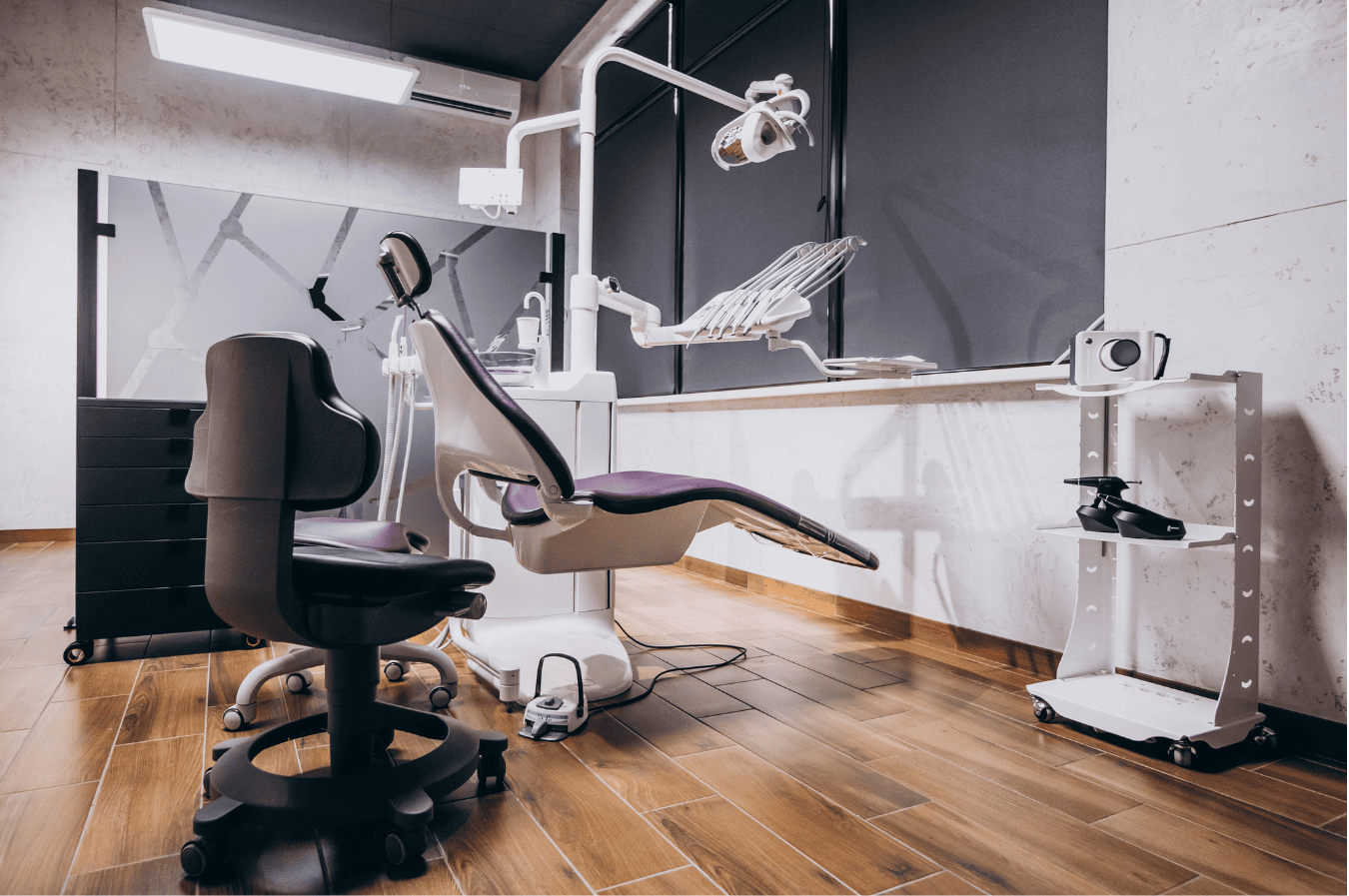A dentist and an orthodontist are both dental professionals who protect oral health, but they serve different roles: a dentist focuses on general dental care while an orthodontist specializes in aligning teeth and jaws to improve function and appearance. This article will teach you the practical differences between these roles, the training that separates them, and when choosing a specialist matters for chewing, speech, hygiene, and long-term dental health. Understanding the distinction clarifies referrals, treatment planning, and outcomes, helping you decide with confidence when to see a dentist versus an orthodontist.
What Is a General Dentist and What Services Do They Provide?
A general dentist is a primary oral health provider who diagnoses, prevents, and treats common dental conditions by restoring tooth structure, managing cavities, and maintaining gum health. Their work preserves function and prevents disease through preventive exams, diagnostic imaging, restorative procedures, and periodontal maintenance. Routine dental care leads to fewer urgent treatment needs, improved oral hygiene, and earlier detection of complex issues that may require specialist referral.
What Does a General Dentist Do? Routine Care and Treatments Explained
A general dentist delivers preventive services, restorative care, and basic surgical procedures to maintain oral health and function. Preventive care includes regular cleanings, fluoride treatments, and patient education. Restorative treatments—fillings, crowns, and root canals—repair damaged teeth and restore function. When issues exceed a dentist’s scope, such as complex tooth movement or severe malocclusion, dentists refer patients to specialists like orthodontists for advanced care.
How Is a Dentist Trained? Education and Qualifications Overview
A dentist completes dental school to earn a DDS or DMD and obtains licensure to practice general dentistry. This education provides broad training in oral anatomy, pathology, and restorative techniques. Continuing education keeps general dentists current, enabling them to manage most routine problems and recognize conditions requiring specialist referral. General training typically does not include intensive orthodontic residency, which is why complex alignment cases are managed by orthodontists.
When Should You Visit a General Dentist? Common Oral Health Needs
Visit a general dentist for regular checkups, cleanings, tooth pain, sensitivity, cavities, and gum concerns. Early treatment stops progression and reduces the need for invasive procedures. Practical indicators include bleeding gums, persistent toothache, recent trauma, or changes in bite or tooth mobility. If the dentist identifies growth, alignment, or bite problems beyond restorative scope, they will recommend specialist evaluation, often by an orthodontist.
What Is an Orthodontist and How Do Their Services Differ?
An orthodontist is a dental specialist trained to diagnose, prevent, and treat malocclusion and dentofacial irregularities through controlled tooth movement and jaw guidance, producing functional and aesthetic improvements. Orthodontic mechanisms involve biologic remodeling where appliances—brackets and wire systems, aligner trays, or surgical guidance—apply calibrated forces to correct overbite, underbite, crossbite, and crowding. The primary benefit is durable correction of alignment and bite relationships that prevent uneven wear, facilitate cleaning, and often improve facial balance.
What Does an Orthodontist Do? Teeth and Jaw Alignment Explained
An orthodontist diagnoses malocclusion—conditions such as overbite, underbite, crossbite, and crowding—and designs treatment plans using appliances to reposition teeth and correct jaw relationships. This improves function and esthetics by using bone remodeling in response to light, continuous forces applied by braces or aligners. Correcting bite relationships reduces abnormal tooth wear, improves chewing efficiency and speech articulation, and makes oral hygiene easier, lowering long-term disease risk.
How Is an Orthodontist Trained? Specialized Residency and Board Certification
An orthodontist completes post-doctoral residency training focused on dentofacial orthopedics, biomechanics of tooth movement, growth modification, and management of complex skeletal discrepancies. Board certification further verifies advanced clinical skills. This concentrated education allows orthodontists to plan multidisciplinary care, coordinate with oral surgeons for surgical orthodontics, and manage TMJ-TMD related cases with greater expertise than general dental training typically provides.
What Orthodontic Treatments Are Offered? Braces, Invisalign, and More
Orthodontic practices offer a range of treatments—traditional braces, ceramic braces, self-ligating systems, and clear aligners such as Invisalign—that address diverse patient needs across age groups. Treatment mechanisms vary: bracket-and-wire systems use controlled forces, while Invisalign uses sequential aligner trays. Surgical orthodontics combines orthodontic alignment with jaw surgery for severe skeletal discrepancies. Benefits include corrected bite, improved aesthetics, and functional gains like easier hygiene.
Treatment Comparison Table
| Treatment | Typical Age / Indication | Main Benefit |
|---|---|---|
| Traditional braces | Children, teens, adults with complex misalignment | Precise tooth movement for moderate–severe cases |
| Ceramic braces | Teens and adults prioritizing appearance | Less visible fixed appliance with strong control |
| Self-ligating braces | Teens and adults seeking efficiency | Reduced friction, potential shorter appointments |
| Invisalign (clear aligners) | Teens and adults with mild–moderate crowding | Aesthetic, removable option for discreet correction |
| Surgical orthodontics | Skeletal discrepancies, adults | Corrects jaw relationships for function and balance |
| TMJ-TMD treatment | Patients with jaw pain or dysfunction | Targets bite and jaw position to reduce symptoms |
What Are the Key Differences Between a Dentist and an Orthodontist?
The key differences between a dentist and an orthodontist lie in scope of practice, depth of training, and types of procedures performed; dentists handle broad dental care while orthodontists focus narrowly on alignment and occlusion correction. Training differences affect clinical choices: dentists are equipped to diagnose and treat many dental diseases, while orthodontists have residency training and often board certification that enable them to manage complex tooth movement and dentofacial orthopedics.
Provider Comparison Table
| Provider Type | Training & Credential | Common Procedures | When to Refer |
|---|---|---|---|
| General Dentist | DDS/DMD; licensure; CE | Cleanings, fillings, crowns, extractions | If alignment, severe bite issues, or surgical needs arise |
| Orthodontist | Orthodontic residency; board certification possible | Braces, Invisalign, retainers, surgical ortho planning | For malocclusion, jaw discrepancies, complex orthodontic cases |
| Pediatric Dentist | Specialized pediatric training | Behavior-adapted care, preventive for children | Referral for interceptive orthodontics or severe dental trauma |
| Oral Surgeon | Surgical residency | Extractions, jaw surgery | When surgical correction is part of orthodontic plan |
When Should You Choose an Orthodontist Instead of a Dentist?
Choose an orthodontist when you or your child has significant crowding, bite misalignment affecting chewing or speech, asymmetry, or when corrective jaw surgery may be needed. Specialist training improves diagnostic accuracy and treatment predictability. Red flags include difficulty chewing, chronic jaw pain related to occlusion, progressive tooth wear, or esthetic concerns impacting psychosocial wellbeing. Early assessment helps determine timing, so consulting an orthodontist for suspected alignment issues is prudent.
Why Choosing an Orthodontist Matters for Your Smile’s Health and Appearance
Specialized orthodontic care improves long-term oral health and appearance by correcting alignment and bite relationships that reduce disease risk and improve facial balance. Correcting malocclusion enhances chewing efficiency, eases speech, and facilitates hygiene by aligning teeth so plaque removal is more effective, lowering risk of decay and periodontal disease. Aesthetic improvements from straighter teeth also contribute to psychological benefits such as increased confidence.
How Does Specialized Orthodontic Care Improve Long-Term Oral Health?
Specialized orthodontic treatment addresses root alignment problems that lead to uneven wear, periodontal compromise, and chewing inefficiency by repositioning teeth and optimizing occlusion for balanced force distribution. This involves guided tooth movement and sometimes growth modification that reduces abnormal stresses, preventing progressive enamel loss and temporomandibular strain over time.
Malocclusion Solutions Table
| Problem | Orthodontic Solution | Long-term Outcome |
|---|---|---|
| Crowding | Aligners or braces to create space | Easier hygiene; reduced decay risk |
| Overbite | Growth guidance or braces; possible surgery | Reduced wear; improved jaw function |
| Crossbite | Expanders or targeted tooth movement | Balanced occlusion; less asymmetric wear |
| Open bite | Vertical control with appliances | Improved chewing and speech function |
How Does AvA Orthodontics Provide Expert Care with Board Certified Specialists?
AvA Orthodontics & Invisalign emphasizes patient-centered specialist care delivered by board certified orthodontists—Dr. Amin Movahhedian and Dr. Hamed Vaziri—whose advanced training supports complex case management and contemporary treatment options. The practice offers comprehensive orthodontic solutions including braces, Invisalign, surgical orthodontics, and TMJ–TMD treatment that align with evidence-based approaches. AvA’s local outreach and charity partnership with Smile Train, plus free consultations, add trust signals and access points for patients in Spring, TX and surrounding communities.
How to Choose the Right Specialist for Your Orthodontic Needs in Spring, TX and Surrounding Areas
Choosing the right specialist involves evaluating credentials, treatment options, patient experience, and local accessibility. Practical decision factors include board certification, years and focus of training, available technologies (digital planning, aligner workflows), and whether the office offers the specific treatments you need. Local considerations—convenience, free consultation availability, and community trust—help minimize barriers to care and improve adherence to treatment plans.
What Makes AvA Orthodontics the Best Choice for Braces and Invisalign?
AvA Orthodontics presents local trust signals relevant to patients in Spring, TX: board certified orthodontists, Ivy League–trained clinicians, and a patient-centered approach that offers a full range of treatments from traditional braces to Invisalign and surgical orthodontics. These attributes matter because advanced training correlates with reliable management of complex cases and nuanced decision-making. AvA also emphasizes community engagement through a Smile Train charity partnership and provides free consultations, lowering barriers to obtaining specialist opinions.
How Can You Schedule a Free Orthodontic Consultation at AvA?
Scheduling a free consultation at AvA Orthodontics typically involves contacting the practice to request an initial evaluation. Clinicians review your concerns, perform diagnostic imaging, and discuss treatment options such as braces or Invisalign; no referral is strictly necessary. Prepare for the visit by gathering recent dental records, noting specific concerns, and listing questions. During the consultation, the orthodontist or clinical team will outline recommended options, timelines, and next steps.

